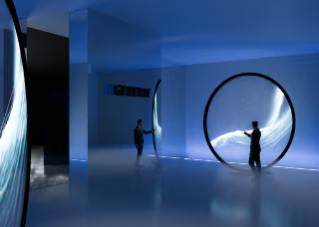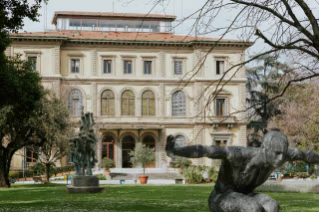



The work for Olivetti runs alongside, without breaks or inconsistencies, the visionary search for a new language, described as "an assemblage of different fragments and references (...), based on the circulation of images and grafting of all kinds of figures, the fruit of his curiosity for every form of life, above all the most marginal: a language open to the free flow of any possible "bastard situation (as he happened to define his love of commingling)"
It was Memphis who demonstrated that design is communication and why – as George Sowden notes, interviewed in the essay – "designing a thing that communicates is very different from designing a thing that functions: it is also incredibly liberating". This movement, that Barbara Radice defined at the time of its first appearance "a melting pot of mutations" celebrates a new expressive freedom in which – according to Picchi – “highly diverse elements flow freely in an uninterrupted stream of assemblages always on the verge of collapse. It is the most lyrical, poetic account of a human condition that accepts its new position without stable, defined and absolute references and expresses all his love for chaos and its accidents”.


Emily King meanwhile, explores those "systems of signs" that for Barbara Radice underpin all of Sottsass’s work. This research that can already be traced in the collections of images cropped and stored in boxes to «immortalise everything he sees» is the basis for an intense graphic and editorial activity, that spans from magazines (Room East 128 Chronicle, Pianeta Fresco or Terrazzo), to advertising campaigns for his designs for Olivetti.
In a beautiful article – written after the death of Sottsass in 2007 – Andrea Branzi argues that "the apparent happiness of his signs and the vitality of his design were the smiling response to the perception of human loneliness, a brief respite to the cosmic drama of existence”.





















